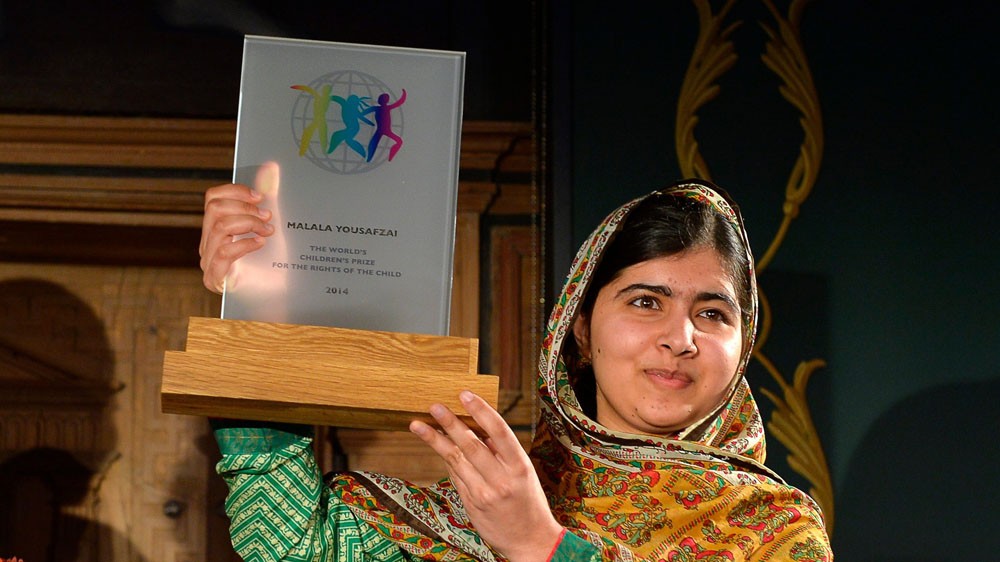
Talking casually with people of Saidu Sharif and Mingora to understand the anti-Malala sentiment in Swat…

Last month, I travelled to Swat to understand the response of educated Swatis to Malala Yousafzai’s cause for education. I interacted with several teachers and civil society activists and a few students, mainly in Mingora city, where Malala lived. In Jahanzaib College Saidu Sharif, I delivered a presentation on The rise of Taliban in Fata on the request of my host at the college. Here, too, I wished to interact with students to know their views about Malala.
Like in the rest of Pakistan, there are two broad categories of opinions about Malala in Swat. There are those who support Malala’s cause for education and those who don’t. I was particularly curious to understand the response of people who do not support Malala’s cause. They opposed her for three reasons: Firstly, they questioned what had Malala done to deserve the Nobel Peace Prize. Secondly, some believed the West is pursuing its own agenda through Malala. Thirdly, that many other people have suffered more than Malala and her family but they receive no recognition.
An assistant professor said, "Male education has suffered more than female education yet Malala has only focused on the latter. Taliban did not ban female education. They only discouraged it."
Another professor said, "I remember whenever a girl left school, Mulla Fazlullah would announce on FM radio that she had chosen the correct path and the rest should follow her footsteps".
In Jahanzaib College in Saidu Sharif, a teacher said, "There are some 2,500 students in the post-graduate college, which also includes some 500 girls. This co-education institute remained operational even under Taliban".
Before Taliban shot Malala in the head on October 9, 2012, Malala was the symbol of a peaceful resistance against the Taliban. According to data compiled by Dr Khadim Hussain in his book The Militant Discourse, by 2010 a total of 175 schools were fully damaged in Swat, which included 55 male and 120 female schools. Similarly, 132 male and 94 female schools were partially damaged.
When I tried to speak to the locals to understand the contribution of the Malala Fund in education in Swat, they feared backlash and sought anonymity. Speaking on condition of anonymity, the head of a non-profit organisation, entrusted with constructing a girls’ secondary school in Shangla financed by the Malala Fund, said that his organisation had purchased a 20 kanal plot in Shangla for an amount of 60 million rupees. The amount was the monetary value of the Nobel Peace Prize, which Malala won in October 2014.
A local activist told me that Shangla was chosen because for a population of 700,000 people, except for a ghost secondary school for girls, there is no secondary school for female.
The head of a Mingora-based female education trust informed that his organisation has received 30 million rupees through the Malala Fund. He also mentioned that since 2013 the Malala Fund has financed education of 40 girls in Mingora who were saved from child labour and whose parents receive a monthly stipend too.
He further said that in Shangla, 30 orphans, boys and girls, are getting free education in a private school in Swat that is funded through the Children’s Peace Prize awarded to Malala by the Kids Rights in September 2013. The school will be financing 30 orphans for life, and intermediate level education of 60 girls from Shangla. He added that in 2014-15, Malala Fund also contributed 13,000 dollars to Khwendo Kor (Sisters’ Home) for IDPs in FR Bannu under the project of ‘education in emergency’, and in Upper Swat, through an NGO, the Malala Fund is funding three schools with an amount of 183,000 dollars.
I was intrigued to know why despite these enormous contributions an anti-Malala sentiment persists. The most obvious answer was that Malala is a victim of jealousy. Torborwali, the intense competition for prominence among paternal cousins, is one of the retrogressive values of traditional Pashtun society. The problem is that the rise of a cousin is seen at the expense of others and as a result every attempt is made to hold back the rise of a cousin.
In Malala Yousafzai’s and her family’s case, it is the effect of the torborwali beyond the confines of immediate cousinhood that is responsible for the anti-Malala narrative prevailing in Swat. In fact, Malala’s father Ziauddin, a private school teacher, belonged to a humble background. Malala’s social standing in Mingora, Swat, would have never qualified her for a high profile role that she enjoys today. Among her harshest critics, several are either former friends or close contacts of Ziauddin Yousafazai.
Local stereotyping is commonplace in Swat. "You cannot trust the people of Shangla. They are selfish," remarked a man, continuing, "See, Ziauddin has earned a reputation in the name of Swat yet he invests in education in Shangla, a district in Malakand Division where Ziauddin Yousafzai originally belongs to. He settled in Mingora in 1996."
The educated class of Swat hardly spoke against the Taliban. But they were eloquent in their criticism to Malala. "Taliban were not in favour of female education because in Islam earning a livelihood is the responsibility of males, not females," said a teacher.
I wonder if the people of Swat would gain anything if Malala, bereft of the Nobel Prize, returns to Swat and waits only to be killed, and will the pangs of jealousy have higher purpose than discrediting the source of our pride.